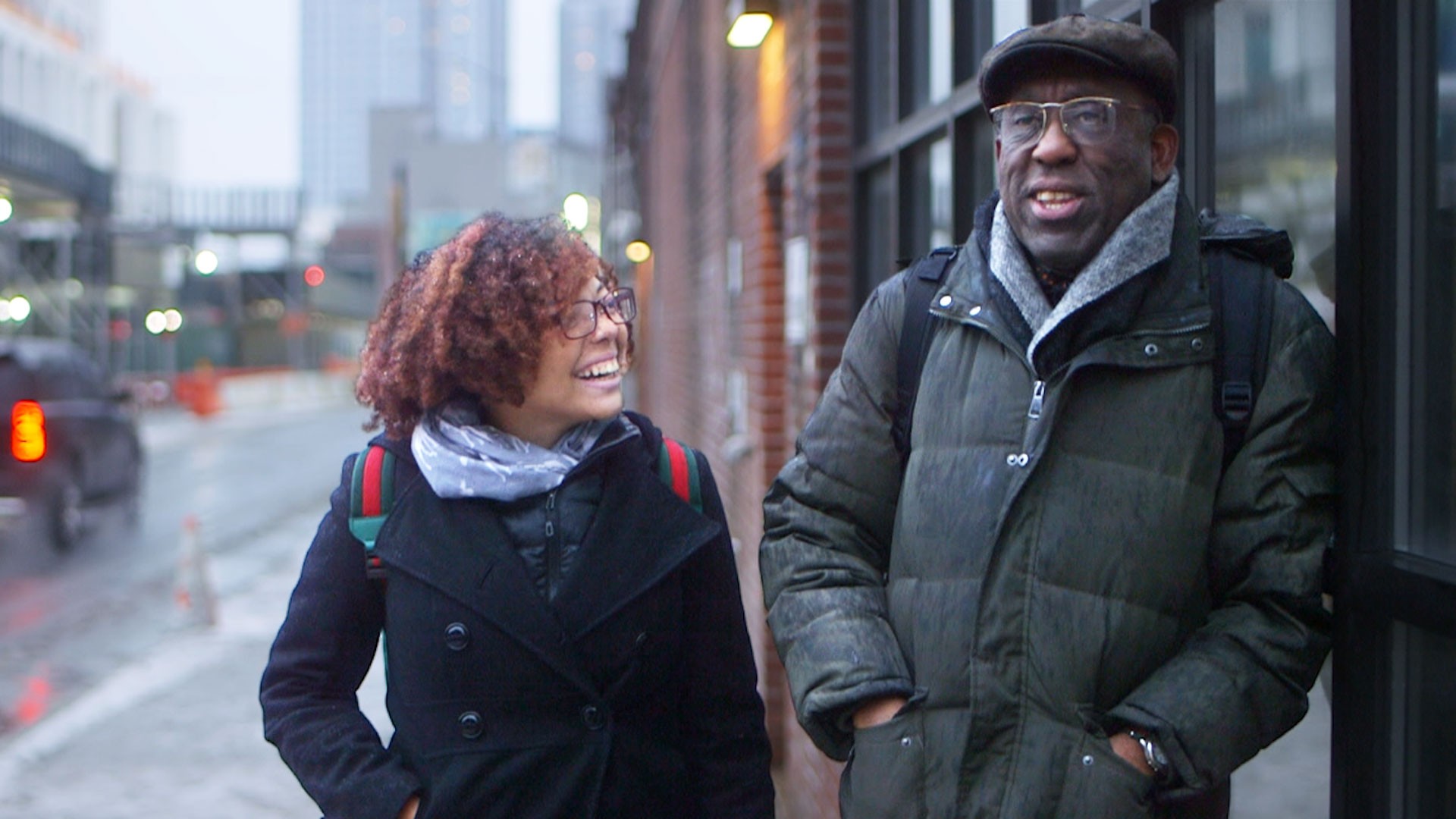Composite image; cover image courtesy of Haymarket Books
Eve L. Ewing has accomplished a lot in just a little time. She’s a sociology professor at the University of Chicago, the author of Ironheart, a Marvel comic book, two poetry collections, a play (with poet Nate Marshall) about the Chicago poet Gwendolyn Brooks, and a book, Ghosts in the Schoolyard: Racism and School Closings on Chicago’s South Side, as well as a forthcoming children's book, Maya and the Robot. Her most recent poetry collection, 1919, explores Black American experience of violence and dispossession before, during, and after the Chicago Race Riot of that same year.In conversation with Ewing about 1919, the idea of time came up frequently. To Ewing, there are two ways of seeing time: as linear and circular. The Black American idea of exodus from oppression and deliverance to the promised land, viewed in terms of time, can seem as time usually seems: linear, from point A to point B. But the relentless recurrence of racist violence and oppression throughout all periods of American history suggests another way of seeing time: as circular. Ewing developed on these ideas in conversation with VICE."You know," she said, "the Great Migration, in a way, is an exodus story. It's about Black people leaving the agricultural South in the wave of incredible racist violence and attacks and the threat of bodily harm and harassment. And so, you know, Exodus has always been a part of the Bible that has particular historical importance for African-American people…in terms of folks’ relationship to it during the days of slavery and, you know, the kind of image of Moses and the promise of deliverance out of Egypt…And so it's kind of a lens that we can look on historically. But it's also a lens that people were using at the time to describe the social phenomenon that they were experiencing and witnessing." The Great Migration was an act of hope, but the Chicago Race Riot of 1919 suggested that, rather than exodus and deliverance, a seemingly eternal return to racist oppression and violence was more like the truth. The drowning of Eugene Williams at a segregated Chicago beach sparked the riot that killed twenty-three Black people and fifteen white people. More than that, one thousand people became homeless because of attacks and arson, and somewhere between five and six thousand Illinois National Guard troops patrolled the city. Ewing’s short poem "The Street-Car Speaks" captures simply and intensely the hope and pain of newly-arrived Black Americans in Chicago, as well as the horrible violence of the riot:not this freedom. I / lost them, my wires sparking / amidst the bruises.The question that remains after reading 1919 is whether exodus and deliverance are still possible. If America is in a cycle of eternal return to the grip of racist violence and oppression, how can the cycle be broken? Ewing’s concluding poem in 1919, "I saw Emmett Till this week at the grocery store," may point the way.The poem shows Emmett Till—the young Chicago boy murdered by racists in 1955 in Mississippi while visiting relatives—as he could have been. In the poem, he’s a normal man at the grocery store gently examining plums. In this simple little action, his could-have-been and should-have-been sensitivity and humanity and normalcy are undeniable:whistling softly, reaching with a slim, woolen arm
The Great Migration was an act of hope, but the Chicago Race Riot of 1919 suggested that, rather than exodus and deliverance, a seemingly eternal return to racist oppression and violence was more like the truth. The drowning of Eugene Williams at a segregated Chicago beach sparked the riot that killed twenty-three Black people and fifteen white people. More than that, one thousand people became homeless because of attacks and arson, and somewhere between five and six thousand Illinois National Guard troops patrolled the city. Ewing’s short poem "The Street-Car Speaks" captures simply and intensely the hope and pain of newly-arrived Black Americans in Chicago, as well as the horrible violence of the riot:not this freedom. I / lost them, my wires sparking / amidst the bruises.The question that remains after reading 1919 is whether exodus and deliverance are still possible. If America is in a cycle of eternal return to the grip of racist violence and oppression, how can the cycle be broken? Ewing’s concluding poem in 1919, "I saw Emmett Till this week at the grocery store," may point the way.The poem shows Emmett Till—the young Chicago boy murdered by racists in 1955 in Mississippi while visiting relatives—as he could have been. In the poem, he’s a normal man at the grocery store gently examining plums. In this simple little action, his could-have-been and should-have-been sensitivity and humanity and normalcy are undeniable:whistling softly, reaching with a slim, woolen arm
into the cart, he first balanced them over the wire
before realizing the danger of bruising
and lifting them back out, cradling them
in the crook of his elbow until
something harder could take that bottom space.The speaker identifies Till by his porkpie hat from a well-known photo of the boy. Then they speak briefly, exchange pleasantries, and talk about the weather. And really, that’s one of the most remarkably tragic things about the poem: a vision of comfortable normalcy stolen violently, senselessly, over and over again. Ewing thinks the poem resonates with readers because "it's one of the few times that folks have been asked to reflect on what it would have looked like to envision a futurity for Emmett Till…and to think about him not in terms of the past but in terms of the future, in arrested future or an alternative future."It’s what could have been haunted by what has already been and what continues to be. Ewing’s 1919 is a window into the mental and emotional lives of Black Americans in a Chicago, in an America, where time beckons oppressively. Exodus and deliverance to a promised land? The eternal return of racist violence? Time lends haunted hope. Maybe circular time, the eternal return, could cease and turn linear, toward exodus and deliverance. 1919 places readers in the minds and bodies of Black Chicagoans, Black Americans, and asks readers to see what has been, and what could be.
Advertisement

Advertisement
In discussion of racist violence, a focus on the body is crucial. Ewing writes often in her poetry about bodies and what they mean and how they’re experienced. "For me, it's been really helpful to try to become more aware of the ways in which the anxieties of my head and the anxieties of my heart actually manifest in my body," Ewing said."And the way memory also manifests in the body…And I think that it's one of the ways in which our bodies are incredibly adept at trying to tell us things that maybe our conscious minds are not quite ready to to ascertain …You know like what does it mean when your body is trying to tell you something that your brain hasn't figured out yet. And I think that's also kind of informed by a Black feminist tradition as well. And, you know, thinking about, for example, Audre Lorde’s critique of Cartesian logic and the phrase ‘I think therefore I am’ and reclaiming feelings as like a legitimate way of knowing—and I think that includes feeling that comes to you through the body."Still, as the body predominates, time beckons. "Part of what I'm trying to do with the book," Ewing said, "is invite people to think about how this period of time that was, you know, one hundred years ago from the year in which we live, how it is similar or different to the time in which we live, and also how that kind of similarity perhaps has reverberated in various moments since 1919." Circular time. Eternal return.
Advertisement
into the cart, he first balanced them over the wire
before realizing the danger of bruising
and lifting them back out, cradling them
in the crook of his elbow until
something harder could take that bottom space.The speaker identifies Till by his porkpie hat from a well-known photo of the boy. Then they speak briefly, exchange pleasantries, and talk about the weather. And really, that’s one of the most remarkably tragic things about the poem: a vision of comfortable normalcy stolen violently, senselessly, over and over again. Ewing thinks the poem resonates with readers because "it's one of the few times that folks have been asked to reflect on what it would have looked like to envision a futurity for Emmett Till…and to think about him not in terms of the past but in terms of the future, in arrested future or an alternative future."It’s what could have been haunted by what has already been and what continues to be. Ewing’s 1919 is a window into the mental and emotional lives of Black Americans in a Chicago, in an America, where time beckons oppressively. Exodus and deliverance to a promised land? The eternal return of racist violence? Time lends haunted hope. Maybe circular time, the eternal return, could cease and turn linear, toward exodus and deliverance. 1919 places readers in the minds and bodies of Black Chicagoans, Black Americans, and asks readers to see what has been, and what could be.
